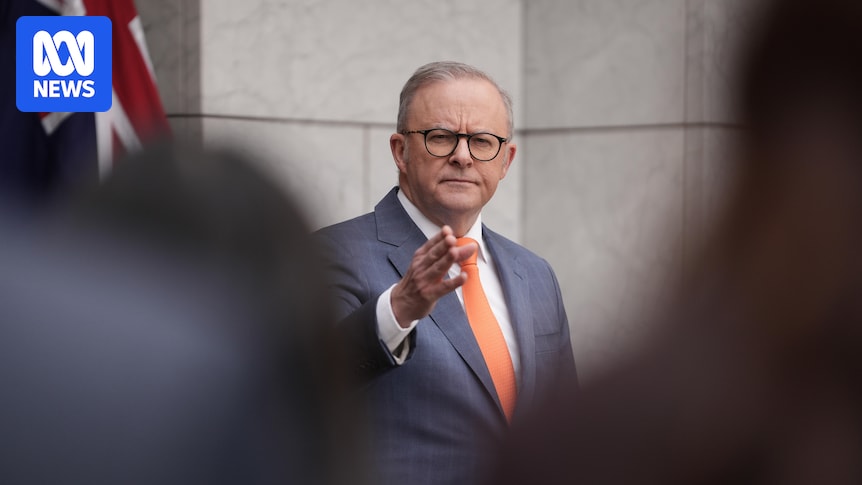
The Albanese government has embarked on a defense spending spree, announcing a series of multi-billion-dollar initiatives just as Prime Minister Anthony Albanese prepares to attend the United Nations General Assembly in New York. With uncertainty looming over a potential one-on-one meeting with US President Donald Trump, the political challenge for Albanese is whether his recent commitments will be perceived as a genuine enhancement of Australia’s defense capabilities or merely a symbolic gesture in response to US demands for increased spending.
In the past week, the Australian government has unveiled significant defense investments, including $1.7 billion for lethal underwater drones known as “Ghost Sharks,” a $12 billion submarine base at Henderson in Western Australia to service AUKUS nuclear submarines and rotating US troops, and a groundbreaking defense pact with Papua New Guinea. This pact is described as “total integration” of the two nations’ forces, aimed at countering the influence of a rising China.
However, a $500 million security pact with Vanuatu, which would have granted Australia veto powers over Chinese investment in the country’s critical infrastructure, has been stalled after negotiations fell through at the last moment. Defense Minister Richard Marles has dismissed speculation that the Henderson announcement was intended to appease Washington or facilitate the AUKUS agreement, asserting that it was driven by Australia’s own strategic needs.
US Pressures for Increased Defense Spending
Despite these announcements, the dilemma remains clear. Washington desires more than symbolic gestures; it demands substantial spending. The second Trump administration has consistently urged Australia to increase its defense expenditure towards 3.5% of GDP, which would amount to nearly $100 billion annually. The Coalition has reaffirmed its commitment to a 3% target, with Shadow Defense Minister Angus Taylor cautioning that current investments “aren’t touching the sides.”
Marles, on the other hand, has refrained from specifying a GDP target, possibly to avoid appearing as though Labor is yielding to American demands. When pressed about the current percentage, Marles emphasized that Labor has pledged $70 billion in defense spending increases over the next decade. He suggested that “people are fixated on the GDP figure and we are not,” while highlighting that, according to NATO’s calculation method, Australia is already spending 2.8% of GDP, not 2%, even before the recent Henderson announcement.
Diplomatic Maneuvers and Strategic Concerns
As advisors and diplomats work behind the scenes to secure an official first meeting between Albanese and Trump, the prime minister has remained cautious, downplaying expectations of a formal bilateral meeting. “We’ll see each other in New York. He’s hosting a reception on Tuesday night of next week. And as well, we’ll see each other at various forums that are taking place between now and the end of the year. It’s summit season,” Albanese told ABC Perth.
In an effort to facilitate a meeting, Marles conducted a brief visit to Washington last month to reassure senior Trump administration officials, including US Vice President JD Vance and Defense Secretary Peter Hegseth, that Canberra would continue to increase investment. This visit aimed to pave the way for a potential one-on-one meeting between the two leaders.
As Australia seeks to ramp up its investment in AUKUS-related projects, such as the Henderson precinct, which is projected to cost $25 billion over the next decade, the future of the trilateral deal remains uncertain. Canberra is awaiting the outcome of a comprehensive review of the pact by senior Trump official Elbridge Colby. The Pentagon has expressed concerns that years of underinvestment have left gaps in Australia’s capabilities, which Washington fears it may need to address in the event of a conflict in the Indo-Pacific region.
The Financial and Political Tightrope
The debate over defense spending is evolving. Under Trump, NATO members have agreed to increase defense spending to 5% of GDP by 2035, with 3.5% allocated to core defense and 1.5% to security-related investments. Although Australia is not a NATO member, the pressure to keep pace is evident and financially burdensome. A jump to 3.5% would require an additional $30 billion annually, roughly equivalent to the Commonwealth’s entire aged care budget.
This is the tension Albanese carries into New York: billions committed at home, but a White House demanding more. The question remains whether Labor’s defense blitz will satisfy Washington or whether only the raw numbers will suffice.
Last week, Trump remarked that Albanese is a “good man” as he prepared to board Air Force One. While a good man may be hard to find, in this diplomatic dance, finding a figure that placates Washington without depleting Canberra’s political capital is perhaps even more challenging.







